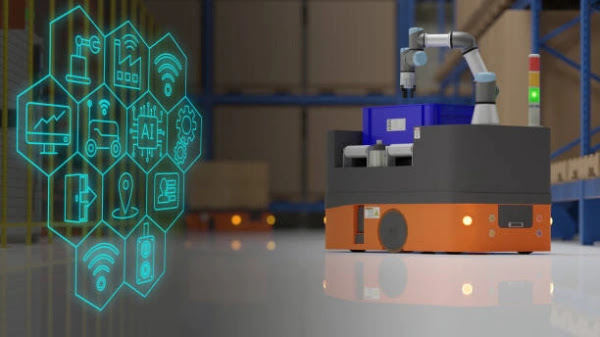Featured
- Get link
- X
- Other Apps
Revolutionizing Healthcare: Medical Advancements through AI and Nanobots
**1. Understanding AI in Healthcare:
Artificial Intelligence encompasses algorithms and machine
learning models that enable computers to perform tasks typically requiring
human intelligence. In healthcare, AI is being harnessed for tasks such as
medical image analysis, predictive modeling, drug discovery, and personalized
treatment recommendations. AI's ability to process vast amounts of medical data
and identify patterns holds the promise of more accurate diagnoses and
treatment decisions.
**2. Nanobots in Medical Applications:
Nanobots, also known as nanorobots or nanomachines, are tiny
machines at the nanoscale that can be programmed to perform specific tasks. In
medicine, nanobots are designed for targeted drug delivery, tissue repair, and
disease detection at the cellular level. These nanoscale devices can navigate
the body's complex biological systems to deliver treatments with pinpoint accuracy.
**3. AI and Nanobots: A Powerful Synergy:
The convergence of AI and nanobots offers a synergistic
approach to healthcare innovation:
Precision Medicine: AI analyzes patient data to customize
treatment plans, while nanobots deliver therapies with unprecedented precision.
Early Detection: AI algorithms process medical data to
identify subtle disease markers, and nanobots target and diagnose diseases at
their earliest stages.
Drug Discovery: AI accelerates drug discovery by simulating
molecular interactions, and nanobots deliver these drugs directly to affected
cells.
Real-time Monitoring: AI analyzes continuous patient data,
and nanobots offer real-time feedback from within the body.
**4. Advancements in Disease Diagnosis and Treatment:
AI and nanobots are revolutionizing medical diagnostics and
therapies:
Cancer Detection: AI analyzes medical images and patient
data for early cancer detection, while nanobots identify and destroy cancerous
cells.
Neurological Disorders: AI interprets brain scans for early
detection of neurological diseases, while nanobots deliver drugs to treat
conditions like Alzheimer's.
Cardiovascular Care: AI predicts heart disease risk, and
nanobots clear arterial blockages and deliver medication to damaged heart
tissue.
**5. Targeted Drug Delivery:
Nanobots are transforming drug delivery, improving treatment
efficacy and minimizing side effects:
Site-specific Delivery: Nanobots navigate through the
bloodstream to target specific cells or tissues, reducing the impact on healthy
tissue.
Reduced Toxicity: Precise drug delivery minimizes toxicity
and enhances therapeutic outcomes.
Personalized Treatment: AI analyzes genetic and medical data
to tailor drug formulations, while nanobots deliver personalized doses.
**6. Challenges and Ethical Considerations:
The integration of AI and nanobots in medicine raises
various challenges:
Safety: Ensuring the safety of patients when using nanobots
requires rigorous testing and ethical considerations.
Privacy: Protecting patients' medical data from potential
breaches is essential for maintaining trust.
Regulation: Developing regulations for AI-driven medical
devices and nanobots is vital to ensure their safe and ethical use.
Equity: Ensuring that AI and nanobot-enabled treatments are
accessible to all patients is a critical consideration.
**7. Impact on Healthcare Systems:
AI and nanobots are poised to reshape healthcare systems
worldwide:
Preventive Care: Early disease detection through AI and
nanobots can shift healthcare focus from treatment to prevention.
Reduced Healthcare Costs: Accurate diagnoses, targeted
treatments, and minimized hospital stays contribute to cost savings.
Enhanced Patient Outcomes: Personalized therapies improve
patient outcomes, enhancing quality of life.
**8. Future Directions:
As AI and nanobots continue to evolve, their future
applications in healthcare are promising:
Remote Healthcare: AI-powered remote monitoring and
telehealth can be coupled with nanobots for remote diagnostics and treatments.
In an era characterized by rapid technological advancements,
remote healthcare has emerged as a revolutionary approach to delivering medical
services and monitoring patients' health from a distance. Also known as
telehealth or telemedicine, remote healthcare utilizes digital communication
technologies to connect patients and healthcare providers, transcending
geographical barriers and enhancing access to medical care.
Regenerative Medicine: Nanobots could play a role in tissue
repair and regeneration, working at the cellular level.
Neurological Interventions: Nanobots may offer novel
approaches for treating neurological disorders by directly targeting affected
cells.
The synergy between AI and nanobots represents a monumental
leap forward in the field of medical science. By harnessing the computational
power of AI and the precision of nanobots, healthcare is entering a new era of
personalized, targeted, and minimally invasive interventions. From early
disease detection to precise drug delivery, these advancements have the
potential to significantly improve patient outcomes, reshape healthcare
systems, and elevate the standard of medical care. As we navigate the ethical
considerations and technological challenges, the integration of AI and nanobots
offers a glimpse into a future where medical interventions are not only more
effective but also more compassionate and patient-centered.
- Get link
- X
- Other Apps


